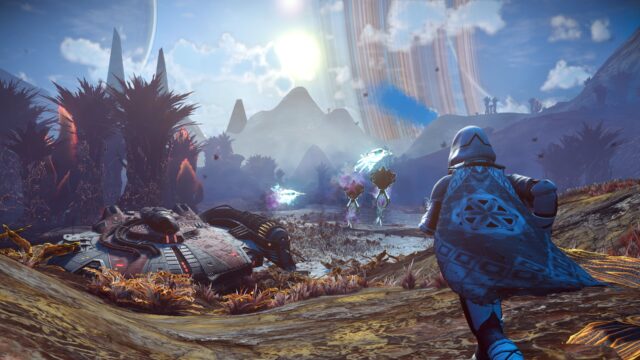If Dishonored is a delicious cake, colored by a purple velvet dye of suspicious origins, then Dark Messiah was the prototype that didn’t rise correctly. Released six years earlier, it reached for a similar mixture of stealth and bloodletting motion, however turned out lumpy and uneven, its spongy physics sliding throughout crumbly technical foundations. Dark Messiah in all probability had a soggy backside as properly, however Mary Berry wasn’t offering important assessments on the telly again then.
It’s a minor blotch on an in any other case excellent observe report – one which Arkane can look again on with pleasure because it celebrates its 20 12 months anniversary. But the actual fact that Dark Messiah didn’t fairly come collectively is what makes it fascinating to check. We can choose by way of its undercooked combine and nonetheless see the elements concerned in its creation, the constituent elements that turned a part of the studio’s id.
The largest of those was the affect of Looking Glass Studios, the defunct ‘90s developer that had a profound impact on nascent game designers of the era. Arkane’s first game, Arx Fatalis, had been a tribute to Ultima Underworld, the Looking Glass dungeon crawler that positioned an uncommon give attention to problem-solving, empowering gamers to beat obstacles in essentially the most literal potential method, by levitating over them. For its subsequent game, Arkane appeared to Underworld’s follow-up, Thief.
Dark Messiah has stealth programs that observe the noise of footsteps on completely different surfaces, and the diploma to which its protagonist is hid by shadow. The NPCs, which most gamers lower down on sight, have AI routines that see them react to surprising bumps earlier than returning to their patrols. The game even has rope arrows, a rarely-copied software from Thief which may be fired into any picket floor to create an impromptu ladder.
Loads of it, frankly, might be stripped out with out hurting the game’s main enchantment – the showy first-person melee exemplified by its ‘kick’ button, which fires enemies backwards into chasms and wall spikes. Perhaps Dark Messiah would have benefitted from larger give attention to that core, quite than getting slowed down in extraneous programs.
But it’s clear that game director Raphaël Colantonio simply couldn’t help himself. One early mission, wherein you’re merely required to stride from one facet of the besieged metropolis of Stonehelm to the opposite, boasts many peculiar winding routes and secrets and techniques. Meander for lengthy sufficient and also you would possibly discover the underground bar, utilizing telekinesis to maneuver and catch the bottles meant for goal observe, and consuming every in flip for a minor well being profit. It’s a unprecedented, and barely daft, stage of simulation for a conceptually easy motion game.
There’s an obvious pressure right here, between the mission Arkane wished to make and the one it was commissioned to. But that contrariness pays off in locations – as when an arrow thuds into the bow of the ship you’re defending, and also you pluck it out, firing it again on the blackguards. Or when, outnumbered, you choose up a crate and lob it on the head of a goblin, knocking the creature backwards right into a campfire. This emergent comedy is the stuff of fail movies, and in case you squint a bit, you possibly can even see the artistic kill compilations which have seen Dishonored go viral.
The different key ingredient in Dark Messiah’s combine is Valve. Back in 2006, this was one among only a handful of non-Valve games to make use of Half-Life 2’s Source engine, all of which appeared to end up wonky however loveable. The influence of the gravity gun is obvious, Valve’s physics lending itself to a number of entertaining, if contrived, sequences involving tumbling barrels. But greater than that, Dark Messiah attracts on the sense of momentum in Valve’s single-player games, funnelling the participant ahead by way of unusual, subterranean setpieces. This is definitely Arkane’s most linear game, at occasions feeling like a excessive fantasy Half-Life, rising water puzzles and all.
Arkane by no means fairly received to make its personal Half-Life marketing campaign, although it got here very shut, conceiving an episode named Return to Ravenholm shortly after Dark Messiah got here out. Instead, the studio wound up working with City 17 designer Viktor Antonov. Dishonored’s Dunwall shares a layered look with Half-Life 2’s metropolis, clamping totalitarian armour onto historical European structure.
It appears self-evident in 2020, the 12 months of hindsight, that Arkane had large potential ready to be unlocked by an even bigger finances and larger freedom. But publishers and gamers on the time additionally noticed how uneven the physics received in Dark Messiah. Objects would fly by way of enemies with out resistance, and crypts typically bobbed up and down in midair, as if thrown about on an invisible sea. Who may declare to know that Arkane would ultimately match Looking Glass and Valve for high quality, quite than proceed to buggily imitate them?
Ultimately, Bethesda did. By backing Arkane for Dishonored and every thing that adopted, Bethesda ensured that Dark Messiah turned a punctuation level on Arkane’s path to greatness, quite than an underwhelming full cease. It’s because of them that we will look again on this game and snicker at its quirks, realizing they’d be ironed out, and that Arkane’s cussed dedication to stealth, simulation, and oblique homicide would lastly be rewarded.





